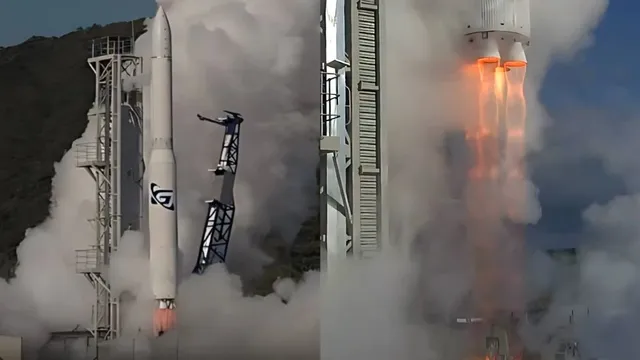Australia’s ambitious entry into the space launch arena encountered a significant setback as Gilmour Space Technologies’ Eris rocket crashed mere seconds after liftoff during its maiden orbital attempt.
The much-anticipated launch from the Bowen Orbital Spaceport in Queensland concluded abruptly when the 23-metre launch vehicle ascended approximately 50 metres before veering sideways and impacting near the launch complex amid a substantial smoke plume early on Wednesday.
The company confirmed all four hybrid-propelled engines ignited successfully, yielding 23 seconds of engine burn time during the 14-second flight. Gilmour Space Technologies promptly framed the outcome positively, highlighting the milestone of becoming Australia’s first domestically designed and manufactured orbital launch vehicle to depart the launchpad.
For a maiden test flight, especially after an extended 18-month wait on the pad for final approvals, this is a strong result and a major step forward for Australia’s sovereign space capability.
Engineers emphasised the rocket had been extensively instrumented to gather crucial data, with the team already focusing on a subsequent test flight.
The flight followed multiple aborted attempts dating back to March, when Tropical Cyclone Alfred initially thwarted launch plans. A subsequent May attempt was cancelled due to an unexpected premature deployment of the payload fairing during routine checks, an issue not observed in prior testing.
CEO Adam Gilmour maintained realistic expectations beforehand, noting the immense challenge facing private entities entering the orbital launch market. “Of course, I would have liked more flight time but happy with this,” he wrote on LinkedIn. Back in February, he noted that for a private rocket company, a successful launch into orbit on the first attempt was “almost unheard of.”
Despite the rocket’s failure to achieve orbit or even clear the immediate vicinity of the launch site, the event represented a watershed moment for Australia’s space ambitions. Whitsunday Regional Council Mayor Ry Collins lauded it as a “huge achievement”, stressing its foundational importance.
“This is an important first step towards the giant leap of a future commercial space industry right here in our region,” Collins stated on Facebook.
The venture garnered substantial governmental support, receiving a $5 million Australian dollar ($3.2 million) grant earlier in July through the federal government specifically for developing its next-generation liquid rocket engine. This followed a more substantial AU$52 million ($33.8 million) grant agreement secured in 2023 to advance space technology commercialisation.
Historical context reveals only two prior successful orbital launches from Australian territory, underscoring the technical complexities involved. The space industry’s response remained supportive, with entities like the One Giant Leap Australia Foundation acknowledging the inherent value in early failures:
The only way to learn is to fail forward. We know more today than we did yesterday.
